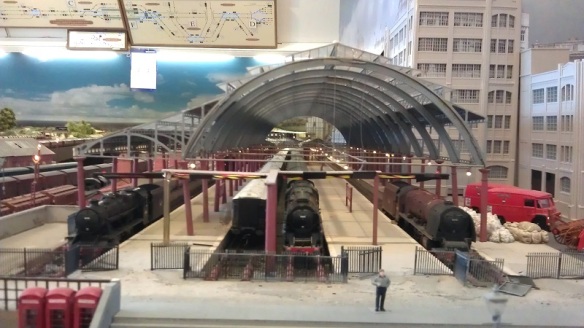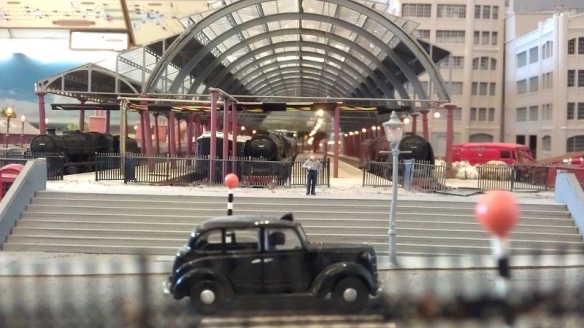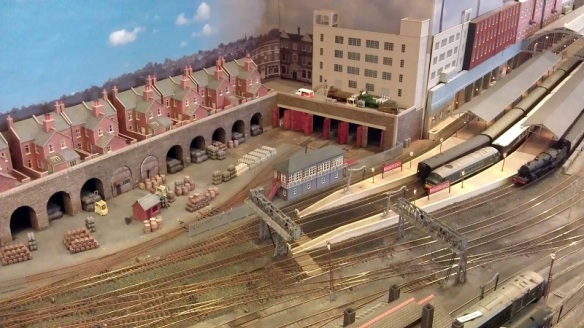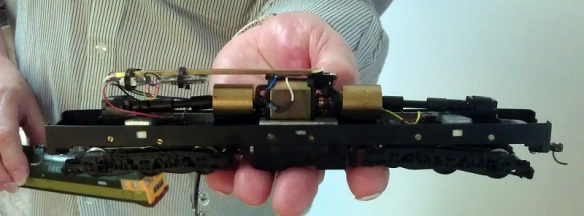Last weekend saw London host the 2015 3D Print Show and as this is something very important to what I am doing I went along to see what new products are coming out and to have good look at the new range of home or desktop 3D printers.
As expected with such a show there were all types of stands from manufactures of 3D printers to suppliers of 3D printing parts and services. They even had a 3D printed food bar!
In particular I was interested in seeing how the desktop 3D printers had improved since I first started getting in involved. I wanted to know how the quality of the finished prints came out and if they could be used succesfully for my 3D models. I had a close look at the big name manufacturers as well as a lot of the new machinery that is coming from startup companies, several of which have been funded by Kickstarter programs. For the most part the desktop machines all work in the same way with plastic filament being heated and laid down by a print head. The limiting factor with this technology used to be the layer thickness, the thicker the layer the more lines are visible on the print. But now as the manufactures have found ways to reduce this thickness, the size of the print head nozzle is becoming more of issue. If you can imagine a very small detail on a part, the quality that is attainable is dependant on the width of the material coming out of the nozzle. Out of all the ‘traditional’ 3D print machines the Ultimaker 2 printers seemed to have the smallest print head nozzles and were giving a nice product but sadly for any of my 3D models the layering effect was still too intrusive.
The next development to the machines that has made a noticeable improvement was a change in the way the motors and drive mechanisms that move the print head worked. Traditionally there is a motor for the X and Y (both horizontal) movements. Each drive a rubber belt which move the print head. The motors are usually very accurate steeping motors which gives the accuracy when moving the print head but there is still ‘wobble’ generated by the movement and the faster the printer is working the more ‘wobble’ you get. The improved machines, as pictured below, still use motors and belts but the system is very different. There are three motors that each move a belt vertically. Attached to each belt is a pair of fixed length rods. The print head sits at the convergence of the three pairs of rods. As each motor adjusts the height of its belt the head moves over the print. If all three motors work together the height is adjusted. This new style of mechanism is clearly smoother than the traditional X and Y system and gave a better finish.

However once again the layering effect was still not good enough to be acceptable for my 3D models.
There was only one 3D desktop printer that I feel comes close the level of quality required for my 3D models and that was the Form 1 built by Formlabs. This machine is totally different to the others. It has a tray that is filled with a plastic liquid. The build plate is lowered into this tray and a laser fires up through the tray and solidifies the parts that you want to the underside of the build plate. As the machine is working the build plate is raised and the model is pulled out of the liquid. Because this system has far less moving parts to add ‘wobble’ into the finished print, in my opinion, it gives the best finish out of all the desktop printers. And I must say for some of my models it would work well.

The one issue all of these printers had in common was the locations of the support material. This is the structure that supports overhanging parts as they can’t be printed in mid-air. These need to be broken off and this always leaves a small mark, similar to an injection mold mark. Both Ultimaker and Formlabs seem to have got this down to a minimum but I could still see on the models they had printed at the show where they needed to be touched up.
So the question is would one of these replace the need to get my models printed by Shapeways? The answer is not yet. The other issue is, as the technology for the desktop printers has improved, so has the technology for the commercial printers. You may recall from a few weeks ago I posted about Shapeways new material FXD (Frosted Extreme Detail), you can read the post here. I have now had parts and locomotive shells printed in this new material and I am very impressed. Below is a comparison between two N Scale EMD DD35 shells. The one on the left is printed in FUD (Frosted Ultra Detail) and the right in the new FXD, these pictires were all taken by Mike Musick. Normally I reduce the size of image files for my posts but I have left these as large images so if you click on them you can see the detail.
 In the photo below you can see the shadow effect under the headlight at the top of the model on the left. This has not happened with the FXD model.
In the photo below you can see the shadow effect under the headlight at the top of the model on the left. This has not happened with the FXD model.

 This shell has been improved by the FXD print without altering the design model.
This shell has been improved by the FXD print without altering the design model.

 The print process to make both FUD and FXD prints does not leave any support material marks and because of the high level of detail achievable I don’t think desktop printers are ready just yet to be considered as an alternative. This is particularly true for N Scale models, although as a test printer they do the job well, and for chassis and parts that are not always visible the Form 1 would be perfect.
The print process to make both FUD and FXD prints does not leave any support material marks and because of the high level of detail achievable I don’t think desktop printers are ready just yet to be considered as an alternative. This is particularly true for N Scale models, although as a test printer they do the job well, and for chassis and parts that are not always visible the Form 1 would be perfect.
The 3D Print Show also introduced me to some other companies whcih provide services like Shapeways. One is I.Materialise who had an impressive display of printed materials. Their full colour plastics were particularly interesting and I will be looking into what I can do with them later in the year. Another useful 3D print service came from 3DPRINTUK who print in SLS; this is the same as Shapeways’ White Strong & Flexible material and in fact they use the same machines. Their pricing structure is different and for multiple runs of small parts they work out a lot cheaper so I will be making good use of them.
Another product that looks like it will be very useful to anybody with a desktop printer, except the Form 1 style, is the 3D printing mat called Zinomat from 3DSVP. This is a mat which prevents your 3D printed item from getting damaged when it is removed from the build plate, as can sometimes happen. This mat is in two parts; the first fixes itself to your build plate, the other is magnetically fixed to the first. Once the print is complete you simply pull up the magnetic mat, then as it is flexible, it allows you to gently roll the print off the mat.
There was also a section of the show dedicated to software for running 3D printers. 3DPrinterOS allows you to connect your 3D printer to the Cloud which means you can send prints to it from anywhere in the world. They also offer enhanced slicing tools, model fixing tools and better connectivity to improve the way your 3D printer runs.
The 3D Print Show wasvery interesting and highly informative about the current state of home or desktop printers. It has made me consider getting one for home use, although only as a testing device. I will certainly go again next year and maybe by then the technology will have improved so much that I can’t say no.
Getting back to my normal 3D printing activities I currently have a few orders being printed by Shapeways and in my next posts I will be sharing them with you.















 Because of the larger engine facility and goods yard the throat to the station is complex and the track work is very impressive.
Because of the larger engine facility and goods yard the throat to the station is complex and the track work is very impressive.








 At each end of the station there is a signal box controlling the train movements, even though the back of the this box faces the operators David has detailed and illuminated the interior.
At each end of the station there is a signal box controlling the train movements, even though the back of the this box faces the operators David has detailed and illuminated the interior.
 Another large area on the layout is Portarlington Exchange Sidings. This is a large freight yard alongside both double main lines which converge before passing under the dispatches desk.
Another large area on the layout is Portarlington Exchange Sidings. This is a large freight yard alongside both double main lines which converge before passing under the dispatches desk.
 The final main area is the small station of McKinley Road. This is a small country station on one of the double main lines positioned just after the two diverge.
The final main area is the small station of McKinley Road. This is a small country station on one of the double main lines positioned just after the two diverge.

 The final part to the layout are the staging areas; as you may have noticed from the track plans above there are several hidden sidings around the layout but the main staging area is in the adjoining room.
The final part to the layout are the staging areas; as you may have noticed from the track plans above there are several hidden sidings around the layout but the main staging area is in the adjoining room. Each main line has four staging tracks.
Each main line has four staging tracks.







You must be logged in to post a comment.